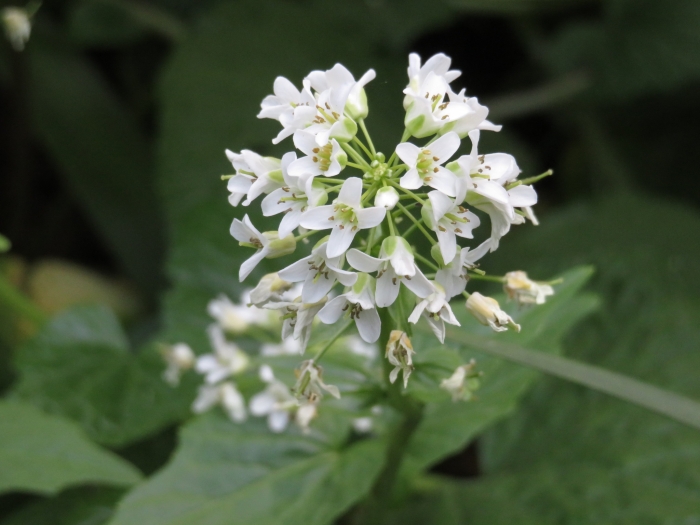Wasabi
(Eutrema japonicum)
Wasabi (Eutrema japonicum)
/
/

belvedere04
CC BY 4.0
Image By:
belvedere04
Recorded By:
Copyright:
CC BY 4.0
Copyright Notice:
Photo by: belvedere04 | License Type: CC BY 4.0 | License URL: http://creativecommons.org/licenses/by/4.0/ | Rights Holder: belvedere04 | Publisher: iNaturalist | Date Created: 2018-03-31T16:03:29-07:00 |

























Estimated Native Range
Summary
Eutrema japonicum, commonly known as Wasabi, is a semi-aquatic, perennial herb native to the cool, shaded stream beds and mountain river valleys of Japan, the Russian Far East, and the Korean Peninsula. It typically grows to a height of 12-18 inches (30-45 cm). Wasabi is characterized by its large, heart-shaped leaves that emerge from long, fleshy stalks, and its small, white flowers that bloom in clusters from late winter to early spring, adding a subtle charm to the plant’s appearance.
Wasabi is highly valued for its rhizomes, which are ground into a pungent paste used in sushi and other culinary dishes. The plant’s preference for high humidity and temperatures between 8-20°C, along with its intolerance of direct sunlight, makes it a challenging crop to cultivate commercially, contributing to its rarity and high cost outside of its native region. In cultivation, wasabi requires consistently moist, organic-rich soil with good drainage and protection from strong sunlight. It is often grown under shade cloth or in greenhouse conditions to mimic its natural habitat. While not commonly used in ornamental horticulture, wasabi can be an interesting addition to water gardens or bog gardens. Potential problems include diseases such as root rot and pests like aphids. Wasabi’s volatile compound, allyl isothiocyanate, is not only responsible for its unique flavor but has also been utilized in innovative applications such as a wasabi vapor-based smoke alarm for the deaf.CC BY-SA 4.0
Wasabi is highly valued for its rhizomes, which are ground into a pungent paste used in sushi and other culinary dishes. The plant’s preference for high humidity and temperatures between 8-20°C, along with its intolerance of direct sunlight, makes it a challenging crop to cultivate commercially, contributing to its rarity and high cost outside of its native region. In cultivation, wasabi requires consistently moist, organic-rich soil with good drainage and protection from strong sunlight. It is often grown under shade cloth or in greenhouse conditions to mimic its natural habitat. While not commonly used in ornamental horticulture, wasabi can be an interesting addition to water gardens or bog gardens. Potential problems include diseases such as root rot and pests like aphids. Wasabi’s volatile compound, allyl isothiocyanate, is not only responsible for its unique flavor but has also been utilized in innovative applications such as a wasabi vapor-based smoke alarm for the deaf.CC BY-SA 4.0
Plant Description
- Plant Type: Herb
- Height: 0.5-1 feet
- Width: 0.5-0.75 feet
- Growth Rate: Slow
- Flower Color: White
- Flowering Season: Spring
- Leaf Retention: Deciduous
Growth Requirements
- Sun: Part Shade, Full Shade
- Water: Medium, High
- Drainage: Medium, Slow
Common Uses
Edible*Disclaimer: Easyscape's listed plant edibility is for informational use. Always verify the safety and proper identification of any plant before consumption., Potted Plant, Water Garden
Natural Habitat
Cool, shaded stream beds and mountain river valleys in Japan, the Russian Far East, and the Korean Peninsula
Other Names
Common Names: Namida, Japanese-Horseradish, Gochunaengi, Wasabe
Scientific Names: , Eutrema japonicum, Alliaria wasabi, Cochlearia wasabi, Cordatifolium wasabi, Eutrema japonicum f. terrestre, Eutrema japonicum f. terrestris, Eutrema japonicum var. sachalinense, Eutrema japonicum var. sachalinensis, Eutrema okinosimense
GBIF Accepted Name: